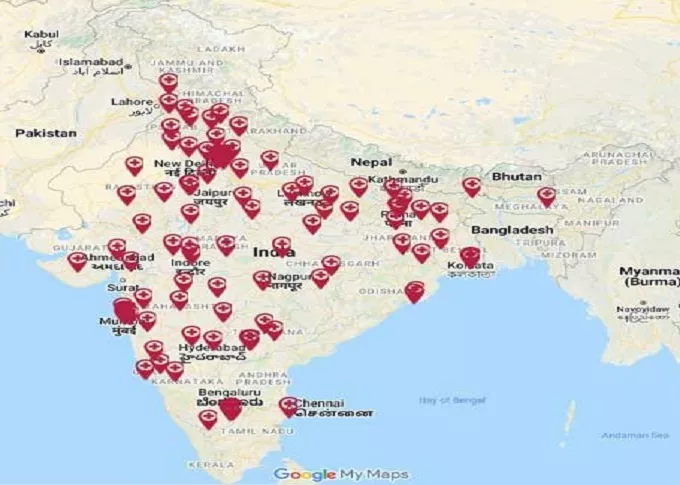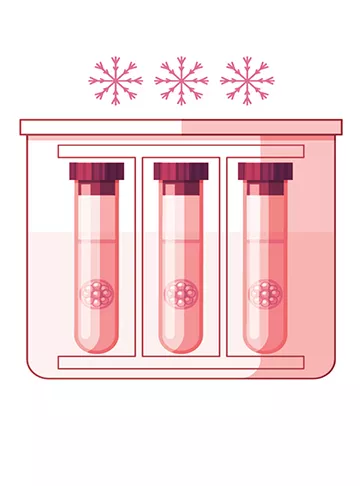Cryopreservation Procedure/Technique
Cryopreservation procedure allows freezing of the eggs, sperms, or embryos for future use. Generally, in IVF, three types of cryopreservation techniques are followed.
Oocyte cryopreservation or Egg Freezing
Oocyte cryopreservation allows you at any desired time later in the future, to use these frozen eggs. When you feel ready for pregnancy, you can use these preserved eggs to ensure a healthier pregnancy. This reduces your concerns about chromosomal abnormalities, which otherwise increase with age, especially when you are 35 or older. Frozen oocytes can be thawed and then combined with sperms in the clinical lab. If everything goes well, and the egg gets fertilized, the resulting embryo is then implanted in the uterus during the IVF cycle.
Sometimes when you are using IVF to conceive a child, with the oocyte cryopreservation technique, you can choose to preserve the remaining harvested eggs for future use, like for when you want to have another child. You can also choose to donate the frozen eggs to other women who are struggling to conceive. Oocyte cryopreservation also allows women to save her eggs, who are undergoing medical treatment like cancer therapy which may hamper her ability to produce eggs.
Procedure
Oocyte preservation has the following steps.
- Ovarian stimulation - Medications will be given to stimulate your ovaries to produce multiple eggs.
- Egg retrieval - It is done in the hospital under sedation. Generally, a transvaginal ultrasound is used in which a probe is inserted into the vagina to locate the follicles. Then a needle is inserted to remove the eggs from the follicles. Usually, around 15 eggs per cycle are retrieved. You might feel slight discomfort and cramping after the procedure.
- Freezing - Retrieved eggs are then harvested and cooled to a subzero temperature to freeze them for future use. Vitrification, a rapid-freezing technique, is most commonly used in the process for egg freezing. Cryoprotectants are used in this cooling process to prevent ice crystals from forming. Slow freezing can also be used for freezing the eggs. But vitrification or rapid freezing is considered a more effective technique, as this reduces the risks of damage to the oocytes, ensuring higher rates of egg survival during the freezing and thawing.
Successful cryopreservation of eggs ensures that you get the best start possible when you feel ready for pregnancy.
Sperm Cryopreservation
Sperm freezing or sperm cryopreservation is a process of storing sperms for future use. It helps men to preserve their fertility who is about to have a treatment that can cause infertility such as cancer therapy, prostate or testicular surgery. You can opt for sperm freezing if you are under the risk of exposure to chemicals or radiation. This procedure is also used in sperm banking. Procedure The semen sample is collected in a sterile dish in a lab and is analyzed for volume, viscosity, sperm motility, sperm count, and other factors. Cryoprotectants are added to prevent any ice crystallization that can occur during freezing. Cryopreservation can be done by following two methods: • Slow freezing- In this method, sperm cooling is done over a period of two to four hours. Then the specimen is placed into liquid nitrogen at minus 196-degree celsius. • Rapid freezing - Here, sterile samples are directly immersed into liquid nitrogen within eight to ten minutes. Due to the high fluidity of the sperm membrane and less water content, sperms are less prone to any damage during cryopreservation.
Embryo Cryopreservation
To begin with, the woman will be given medication to induce the release of multiple eggs. These eggs are retrieved and are allowed to fertilize with the partner’s sperms. Fertilized eggs or embryos are frozen three to five days after fertilization. In the slow freezing method, embryos are frozen slowly over a period of two to four hours, as explained earlier. In rapid freezing, embryos are directly placed in liquid nitrogen at subzero temperatures. If you are not yet ready for childbirth now and want to keep the option open for the future, you can consider cryopreservation. Also, if you are considering IVF or having failed IVF cycle, then cryopreservation can greatly help you to overcome infertility issues. If you are considering cryopreservation, there are certain factors you need to take into consideration. To determine whether cryopreservation is appropriate for you, your doctor may recommend that you first do a fertility test to determine your fertility factors.
Risks Associated with Cryopreservation
Cryopreservation and IVF are generally considered safe procedures. Many research studies have shown that cryopreservation of sperms, eggs, or embryos, is not associated with any adverse effects. Children born with cryopreserved embryos or oocytes do not carry any congenital disability or birth defect.
Pregnancy Calculator Tools for Confident and Stress-Free Pregnancy Planning
Get quick understanding of your fertility cycle and accordingly make a schedule to track it
Get a free consultation!















